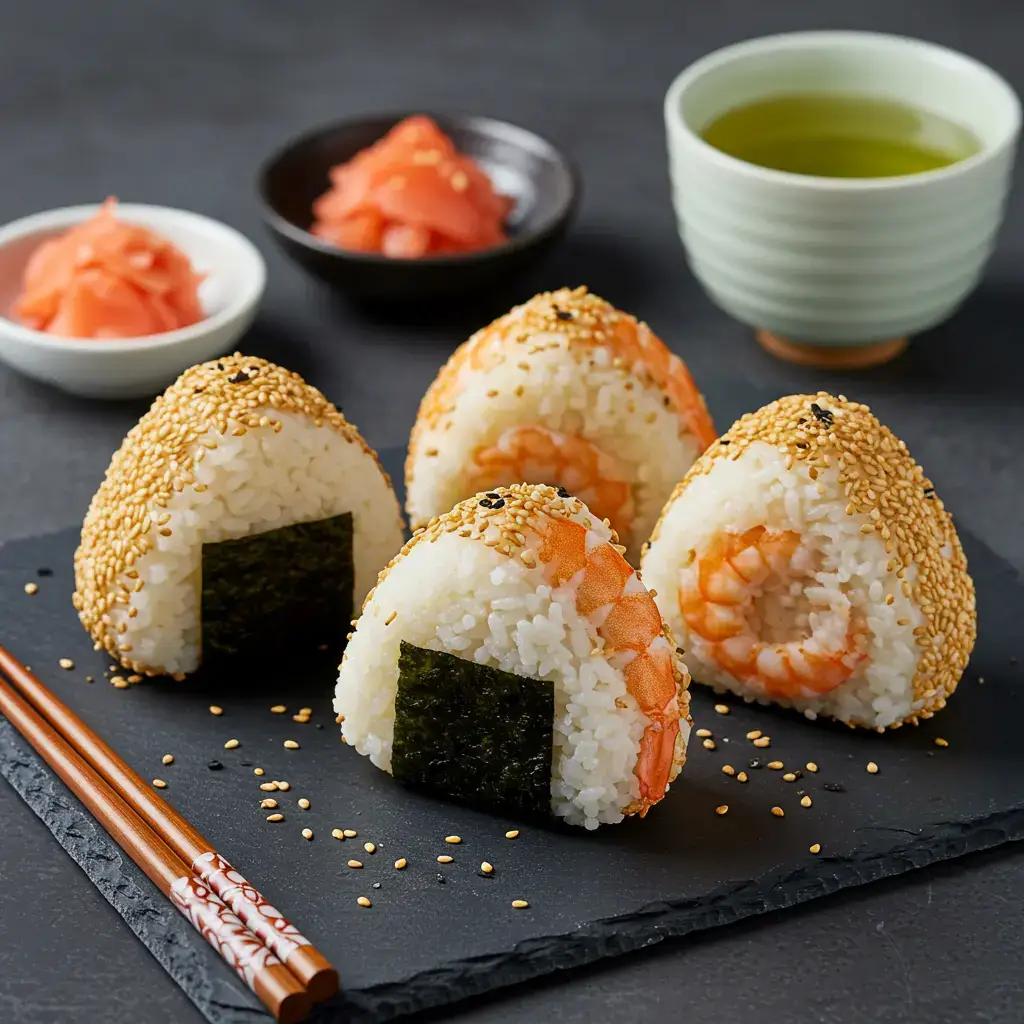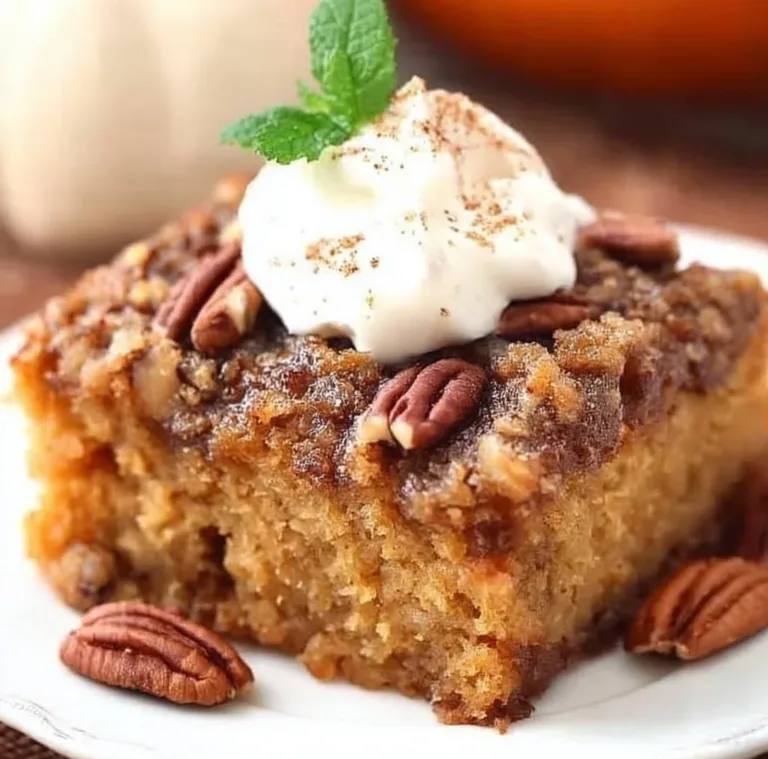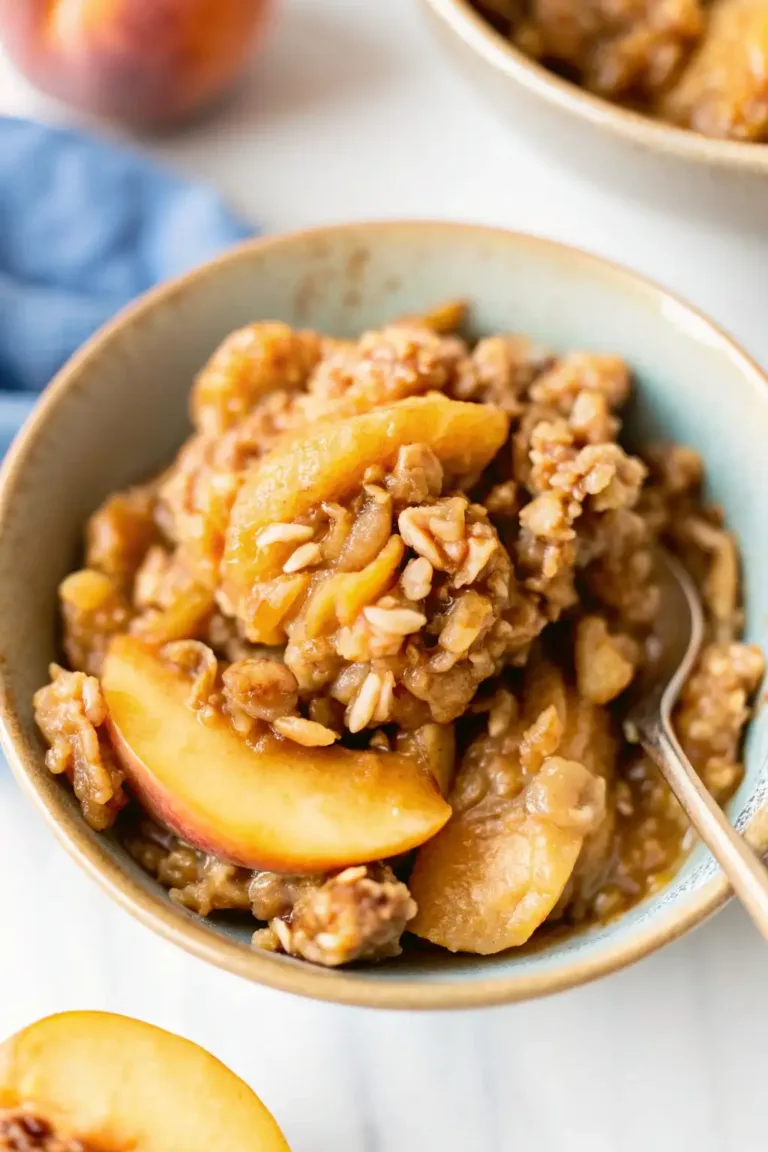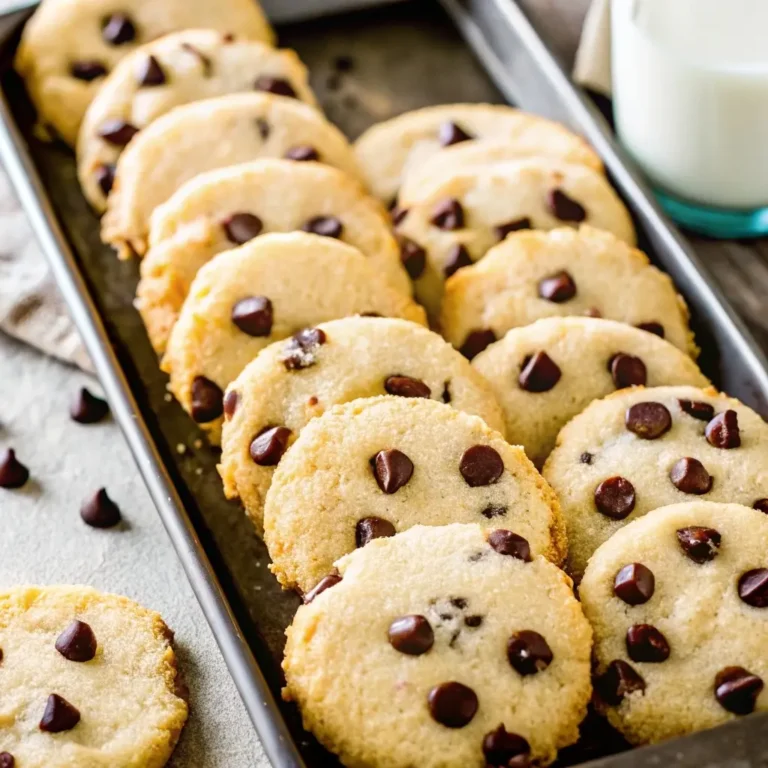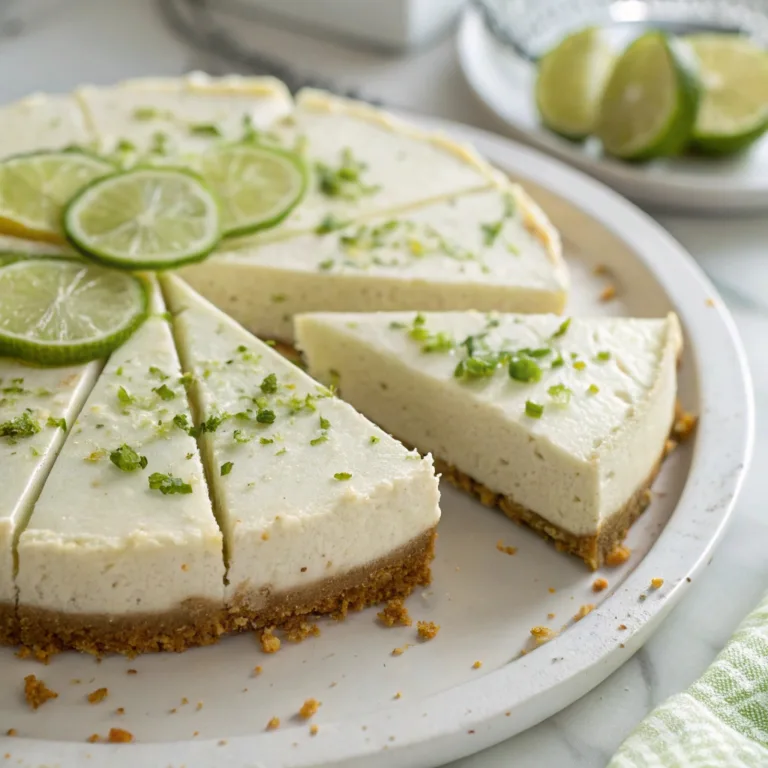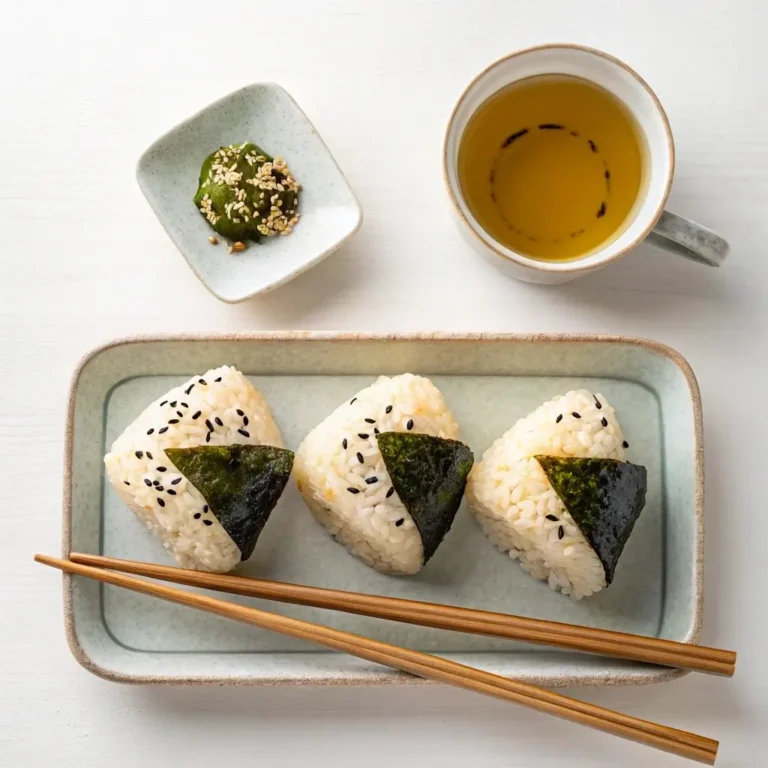Onigiri Shrimp Recipe: Easy Japanese Rice Balls with a Seafood Twist
Onigiri shrimp recipe lovers, you’re in for something special. This savory twist on the Japanese rice ball is stuffed with tender shrimp, seasoned just right, and wrapped in nori for the perfect grab-and-go snack. Whether you’re packing lunch or prepping for a picnic, this recipe brings both comfort and flavor. What makes this onigiri shrimp recipe stand out is how simple it is to prepare yet how satisfying each bite becomes. If you’re new to Japanese cooking or looking to add variety to your meal prep, you’ll want to bookmark this onigiri shrimp recipe and come back to it again and again

Table of Contents
Table of Contents
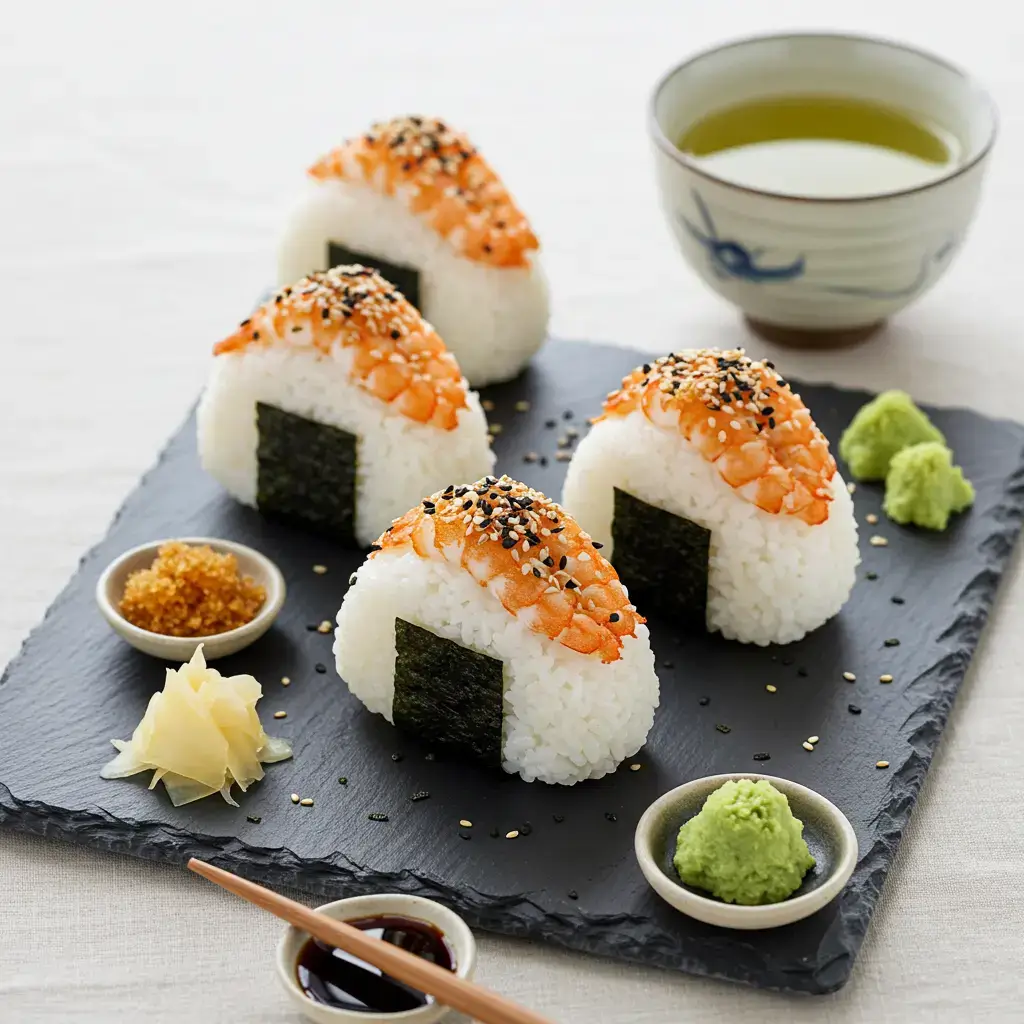
Onigiri Shrimp Recipe: Easy Japanese Rice Balls with a Seafood Twist
Ingredients
Method
- 1. Rinse rice until water runs clear, then cook with 1¼ cups water.
- 2. While rice cooks, season shrimp with soy sauce, mirin, and sesame oil; sauté for 3–4 minutes.
- 3. Mix rice vinegar, sugar, and salt into the cooked rice.
- 4. Wet your hands, scoop some rice, and press a dent in the middle.
- 5. Place a piece of shrimp inside and cover with more rice.
- 6. Shape gently into triangle or ball form.
- 7. Wrap with nori and serve fresh or store properly.
Nutrition
Notes
Tried this recipe?
Let us know how it was!A Story Behind the Shrimp-Filled Triangle
A Memory of Midnight Snacks in Kyoto
I first discovered my love for the onigiri shrimp recipe while backpacking through Kyoto. One rainy night, I grabbed what looked like a simple rice ball at a convenience store. Inside? Warm, perfectly seasoned shrimp that took me straight back to shrimp boils from my childhood in Asheville. That first bite was unforgettable a little sweet, a little salty, wrapped in sticky rice. I’ve been chasing that flavor ever since. Now, it’s part of the lineup at my Copper & Thyme supper club, a crowd favorite for its comforting familiarity and unique Japanese spin.
Why Shrimp Is the Perfect Modern Onigiri Filling
Shrimp adds something truly special to an onigiri shrimp recipe. It’s light, fast to cook, and takes on flavor easily. When paired with sushi rice seasoned with vinegar, salt, and a bit of sugar, it creates a clean, balanced taste. I often sauté the shrimp in a splash of soy sauce and mirin before tucking it into rice. It’s a great option for those who want a seafood twist but aren’t fans of raw fish.From lunchboxes to party platters, this onigiri shrimp recipe brings both flavor and versatility especially when you try sesame-crusted variations too.
Ingredients & Prep Tips

What Goes Into the Perfect Onigiri Shrimp Recipe
Every great onigiri shrimp recipe starts with short-grain Japanese rice. The rice must be sticky but not mushy look for labels like “sushi rice” or “japonica rice,” as used in our grilled salmon onigiri recipe. or “japonica rice.” After cooking, season it with a mix of rice vinegar, sugar, and salt to give the base its iconic flavor. Let it cool slightly before shaping.
For the filling, use fresh or thawed shrimp medium-sized, peeled, and deveined. A quick sauté with soy sauce, mirin, and a touch of sesame oil adds depth without overpowering the rice. You can chop the shrimp into bite-sized pieces or keep them whole for a bolder texture.
Other essentials include roasted nori sheets (cut into strips for wrapping) and optional sesame seeds or furikake (Japanese rice seasoning) to roll the outer layer for crunch and flavor.
Here’s a breakdown of what you’ll need:
| Ingredient | Purpose |
|---|---|
| Short-grain Japanese rice | Sticky base that holds shape |
| Shrimp (cooked with seasoning) | Main filling |
| Soy sauce, mirin, sesame oil | Flavor the shrimp |
| Rice vinegar, sugar, salt | Season the rice |
| Nori sheets | Wrap for holding and flavor |
Tips for Cooking and Shaping Onigiri Like a Pro

Start by wetting your hands and sprinkling them with salt to prevent sticking. Take a scoop of rice, make a small dent, insert the shrimp, and cover it with more rice. Gently press into a triangle (or ball, if easier) without mashing it. The rice should hold but stay light and fluffy.
Keep a small bowl of water nearby to dip your hands between shaping each one. If you’re new to this, using plastic wrap can help mold the shape before applying the nori. Don’t worry about perfection each onigiri shrimp recipe you make will get better with practice, just like in our Japanese Mounjaro recipe where shaping and simplicity matter.

Variations & Pairings
Creative Takes: From Teriyaki Shrimp to Spicy Mayo Onigiri
The beauty of any onigiri shrimp recipe is how easily you can change the flavor profile. One of my favorite variations is teriyaki shrimp onigiri. Just simmer your shrimp in a homemade or store-bought teriyaki glaze before adding them to the rice. The sweetness and umami blend beautifully with seasoned rice.
For a bolder flavor, try spicy mayo shrimp. Mix cooked shrimp with a bit of Kewpie mayonnaise and a dash of Sriracha. It adds creaminess and a kick of heat, perfect for those who like their bites with attitude.
Want crunch? Add chopped pickled radish or tempura bits into the filling. You can even blend chopped green onions or garlic chives into the rice before forming. The combinations are endless shrimp is a flexible protein that plays well with both subtle and bold companions, much like those in our Chilean ceviche.
What to Serve With Onigiri for a Complete Meal
When serving this onigiri shrimp recipe as a full meal, simplicity is key. A bowl of miso soup and a crisp cucumber salad with sesame dressing balance the salty-sweet flavors of the rice and shrimp. You can also serve pickled vegetables like takuan (yellow daikon) or kimchi for contrast or add a zesty sip with our paradise matcha lemonade for a balanced bento box.
If you’re making lunch boxes or meal-prepping, pack a few shrimp onigiri with some edamame pods and a wedge of tamagoyaki (Japanese rolled omelet). They’re portable, nourishing, and satisfying.
On chilly days, I like pairing onigiri with a light broth-based noodle soup. It reminds me of winter nights teaching cooking classes and feeding hungry students something warm and handheld.
For readers wanting other globally-inspired seafood ideas, visit our ceviche description in Spanish post for another way to make the ocean sing on your plate.

Storage, Nutrition & FAQ Insights
How to Store Onigiri Shrimp and Keep Them Fresh
Freshly made onigiri tastes best, but you can safely store them with the right technique. Once you’ve shaped your onigiri shrimp recipe, wrap each rice ball tightly in plastic wrap or store them in an airtight container. If you’re using nori, it’s best to keep it separate and wrap it just before eating to prevent sogginess.
Store in the refrigerator for up to 2 days. To reheat, unwrap and microwave for 20–30 seconds with a damp paper towel to bring back softness. Never leave shrimp onigiri at room temperature for more than 2 hours shrimp is delicate and spoils quickly.
If meal prepping, consider freezing your rice triangles without the nori. Wrap in plastic, place in freezer bags, and reheat in the microwave straight from frozen. You’ll have a warm, savory snack ready in minutes. It’s one of the reasons I love teaching this onigiri shrimp recipe to busy home cooks.
Health Facts and Unique Fillings People Love
This onigiri shrimp recipe is more than just tasty it’s nourishing. Shrimp is low in calories but high in protein, omega-3s, and minerals like selenium and iodine. When paired with seasoned rice, it provides a satisfying balance of carbs and lean protein. You can make it even lighter by reducing sugar in the rice or skipping the mayo in spicy versions.
Want a unique filling? Try shrimp with mango salsa, pickled jalapeño, or even smoked paprika aioli. Some cooks even blend shrimp with mashed avocado or miso-butter for bold, modern spins. The adaptability of shrimp in onigiri makes it a perfect base for creative experimentation, similar to flavor blends explored in our Japanese Mounjaro recipe guide.
For More Recipes Follow me : Pinterest
Conclusion
Whether you’re a longtime fan of Japanese cuisine or just diving into new kitchen adventures, this onigiri shrimp recipe is a satisfying, flavorful way to bring a little culinary creativity into your day. From my first taste in a Kyoto convenience store to the hands-on supper club classes I host in North Carolina, shrimp onigiri has always struck the perfect chord between comfort and innovation. It’s quick to prepare, easy to adapt, and endlessly delicious. I hope this recipe brings joy to your kitchen and becomes a go-to favorite you’ll share with friends, kids, or just keep as a secret snack stash.
Frequently Asked Questions
What do you put inside an onigiri?
Traditional onigiri fillings include salted salmon, pickled plum (umeboshi), and bonito flakes. In this onigiri shrimp recipe, we use cooked, seasoned shrimp. But you can experiment with tuna mayo, miso chicken, or even vegan options like sautéed mushrooms or tofu crumbles.
Is onigiri healthy or unhealthy?
Onigiri is generally healthy, especially when filled with lean proteins like shrimp. It’s made with rice, which provides energy, and can be customized to fit low-fat or high-protein diets. Limit processed fillings or high-sugar seasonings if you’re watching sodium or calorie intake.
What does onigiri contain?
Most onigiri contains rice, a filling (like shrimp), and nori seaweed. The rice is often seasoned with vinegar, salt, and sugar. Additional toppings like sesame seeds, furikake, or chopped herbs may be added for flavor and texture.
What is a unique onigiri filling?
Unique fillings include shrimp and avocado, teriyaki mushrooms, spicy tuna with wasabi mayo, or even sweet-spicy Korean bulgogi. Our onigiri shrimp recipe can be easily adapted by adding mango, miso glaze, or chipotle aioli for a creative twist.

